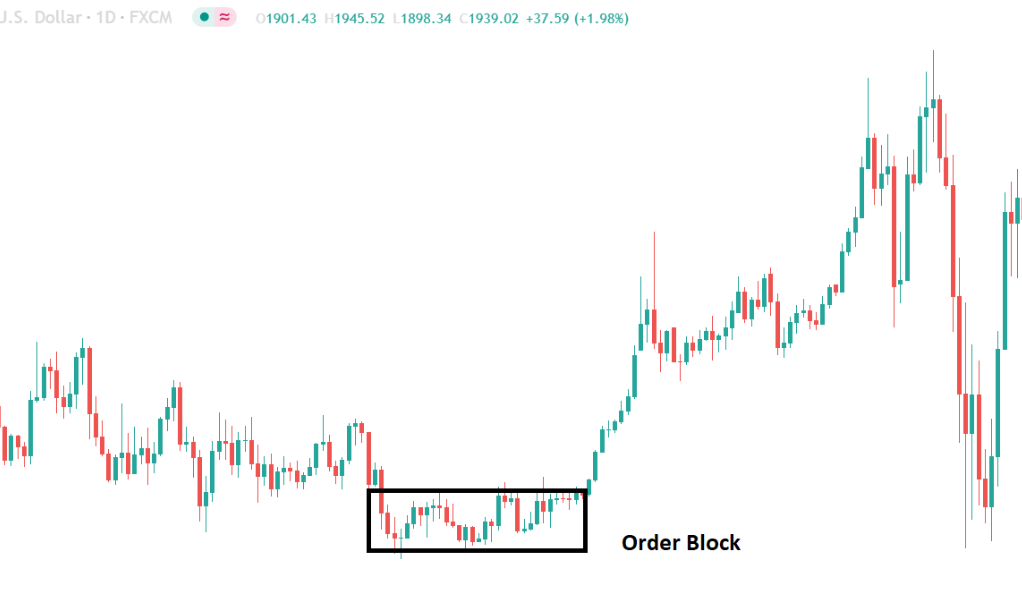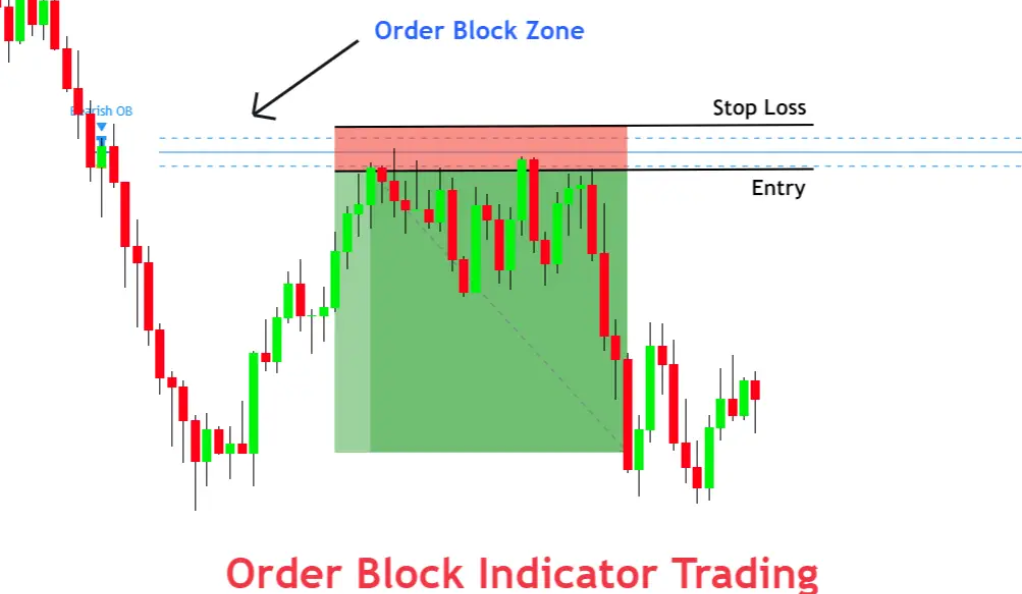In the ever-changing world of trading, understanding market behaviors is more than a skill; it’s an art. Among the myriad of trading concepts, one that stands out is the concept of order blocks. These intriguing phenomena are not just theoretical constructs but pivotal points in the market that can make or break a trading strategy. But what exactly are order blocks, and how can they be leveraged for successful trading? Let’s embark on this enlightening journey.
Understanding Order Blocks: The Building Blocks of the Market

Order blocks are akin to the foundation stones of the trading market, representing critical points where significant buying and selling activities occur. These congregations of orders from major market players act as pivotal junctures, often leading to substantial price movements. Understanding them is like deciphering the market’s DNA, providing insights that can be leveraged for strategic trading decisions.
What Are Order Blocks?
Order blocks are essentially a congregation of orders from banks, institutions, and other significant market players. Imagine a bustling marketplace where everyone wants to buy or sell at specific points. These points are the order blocks, the ‘hotspots’ of trading activity, where the big players are making their moves.
Why Are Order Blocks Important?
Order blocks are often referred to as the pulse of the market, and for good reason. They serve as a vital sign of the market’s health and direction. Let’s delve into why these fascinating constructs are so essential in the trading world.
Indicators of Major Market Activity
Order blocks represent the congregation of substantial buying and selling orders from major market players like banks and institutions. These are not random occurrences but calculated decisions by those who have significant influence over market trends. By understanding where these order blocks are, traders can gain insights into where the big players are likely to make their moves.
Catalysts for Sharp Market Moves

The accumulation of large orders at specific price levels often leads to sharp market moves once those orders are executed. Think of it as a dam holding back a river; once the dam is opened, the water (price) rushes through. Identifying these points can provide traders with a heads-up on potential significant price changes.
A Compass in the Complex Market Landscape
The financial market is a vast and complex ocean, filled with waves of data and information. Order blocks act as a compass, guiding traders through this intricate landscape. By understanding where substantial buying and selling are likely to occur, traders can align their strategies with the market’s flow, rather than swimming against the tide.
Enhancing Risk Management
Knowing where order blocks are located can also aid in risk management. By setting stop losses and take profits around these levels, traders can optimize their risk-reward ratio. It’s like having guardrails on a winding road, providing an added layer of safety.
A Tool for Both Short-Term and Long-Term Strategies
Order blocks are versatile and can be utilized in both short-term and long-term trading strategies. Short-term traders may use them to identify entry and exit points, while long-term investors may see them as significant support and resistance levels. It’s like having a tool that fits different-sized bolts; it’s adaptable and valuable in various scenarios.
The Power of an Order Block Indicator: A Revolutionary Tool
The order block indicator is a groundbreaking tool that unveils the hidden dynamics of market behavior. By identifying bearish and bullish order blocks, it provides traders with a roadmap to navigate the complex financial landscape. It’s akin to having a secret key that unlocks the mysteries of the market.
The Birth of the Indicator
Recognizing the importance of order blocks, a unique indicator has been developed to identify these crucial points. This tool is not just another indicator; it’s a game-changer, providing insights that were previously hidden in the complex market data.
How It Works
The order block indicator, with its simple yet ingenious design, has revolutionized the way traders perceive and interact with the market. Here’s a detailed look at how this remarkable tool functions, likened to a traffic light system that guides traders on when to stop and when to go.

Visual Representation: Red and Green Rectangles
The core of the indicator lies in its visual simplicity. It uses red and green rectangles on a trading chart to represent bearish and bullish order blocks, respectively. This color coding is intuitive, mirroring the universal traffic light system where red signals ‘stop’ and green means ‘go.’
Identifying Bearish and Bullish Order Blocks
Bearish Order Blocks (Red): These are areas where significant selling has occurred, leading to a potential downward movement in price. The indicator marks these areas with red rectangles, signaling caution or a potential opportunity to enter a short trade.
Bullish Order Blocks (Green): Conversely, green rectangles mark areas where substantial buying has taken place, indicating a potential upward movement. These are the zones where traders might look to enter a long trade.
Adaptability Across Markets and Timeframes

The beauty of this indicator lies in its adaptability. Whether you’re trading stocks, Forex, or cryptocurrencies, the red and green rectangles serve as universal signals. Moreover, it can be applied to various timeframes, though some may find the one-hour timeframe particularly effective.
Integration with Existing Strategies
The order block indicator doesn’t have to stand alone; it can be integrated with existing trading strategies and tools. Think of it as an additional layer of guidance, enhancing other technical analyses or trading systems you may already be using.
Enhancing Decision Making
By providing a clear visual cue, the indicator aids in swift and confident decision-making. It’s like having a seasoned guide with you, pointing out the path in a dense forest. Whether to enter a trade, hold, or exit becomes a more straightforward decision with these visual aids.
How to Use the Indicator: A Step-by-Step Guide
Markets and Timeframes
The indicator is versatile. It can be used on any market – stocks, Forex, or crypto, and on any timeframe. However, the one-hour timeframe comes highly recommended. It’s like finding a universal remote that works with all your devices – a one-size-fits-all solution.

Long Trades Strategy
The green light for long trades is when the price comes down to a green order block. Set a stop loss below the block and a take profit at a recent swing high. It’s like catching a falling knife, but with a safety net.
Short Trades Strategy
Enter a short trade when the price hits a red order block. Set a stop loss above the block and a take profit at a recent swing low. It’s like riding a wave, but with a life jacket.
The Art of Confirmation and When Not to Enter
Mastering the art of confirmation in trading is like fine-tuning an instrument; it ensures that you’re in harmony with the market. Knowing when to enter a trade is vital, but equally important is recognizing when not to enter. This understanding helps avoid false signals and minimizes potential losses.
Waiting for Confirmation
While the indicator provides a strong signal, it’s always wise to wait for confirmation. This could be a bullish engulfing candle for long trades or signs of price slowing down at the order block. It’s like waiting for the green light before crossing the road – it’s always safer.
Avoiding False Signals
Not all order blocks are created equal. Avoid entering if the price breaks through an order block strongly, if the order block is very small, or if it has already been touched before. It’s like avoiding a crowded restaurant – sometimes, it’s just not worth the hassle.
Live Trade Examples: Learning from Success
Successful trades using this strategy have been showcased to illustrate the power of this approach. These examples emphasize the importance of following the rules and sticking to the strategy. It’s like following a recipe – the results are usually delicious when you stick to the instructions.
Promotion: Pancake Forex Broker – A Trusted Partner
In the world of Forex trading, choosing the right broker is crucial. Pancake, a renowned Forex broker, is currently offering a deposit-matching bonus and other benefits. It’s like getting a free meal at your favorite restaurant – definitely worth checking out!
Conclusion
In conclusion, the order block indicator is more than just a tool; it’s a powerful ally that can significantly enhance your trading strategy. By providing unique insights into market behavior, it allows you to trade like the big players. The journey of understanding and utilizing order blocks is like unlocking a secret level in a game, providing you with advantages that were previously out of reach. So why wait? Start leveraging the power of order blocks today and elevate your trading to new heights. Remember, in the world of trading, knowledge is power, and with this tool, you’re one step closer to becoming a trading maestro.
Ainu Token aims to offer impartial and trustworthy information on cryptocurrency, finance, trading, and shares. However, we don't provide financial advice and recommend users to conduct their own studies and thorough checks.

Comments (No)